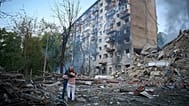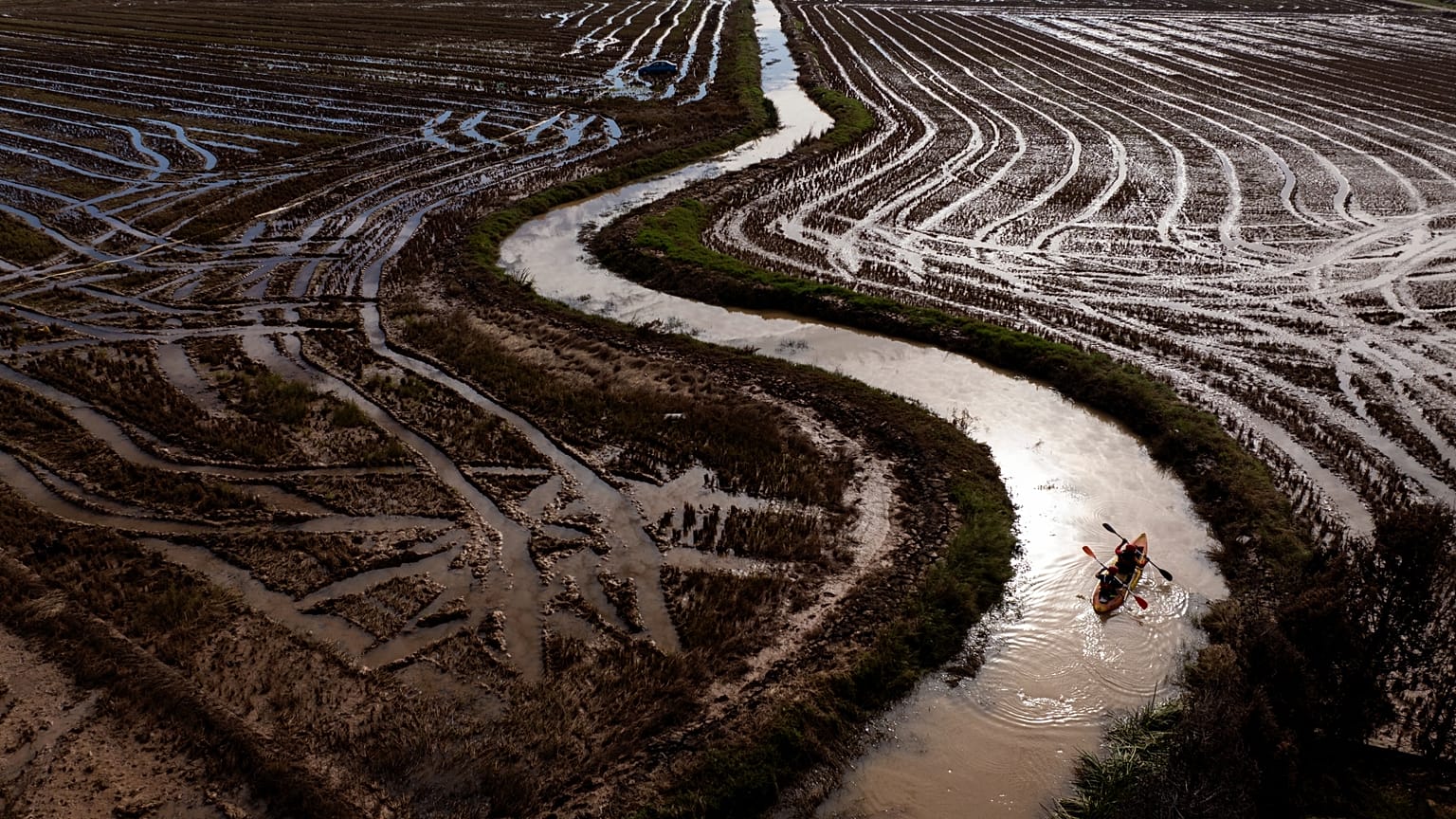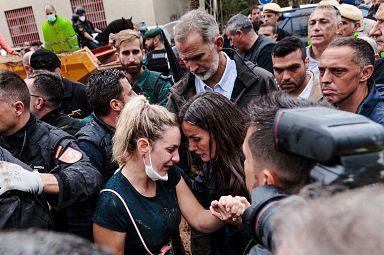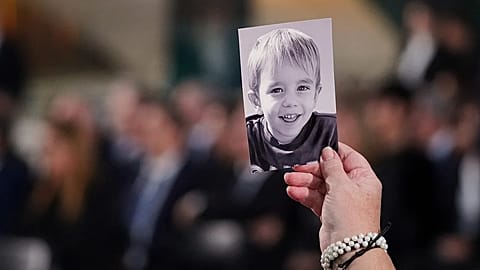Experts say there have been improvements in warning systems, education and institutional coordination. But they warn that improvements to infrastructure and urban planning are still mostly pending.
One year after its worst natural disaster of the century, Spain is still trying to heal its wounds and understand what went wrong. On 29 October 2024, a flash flood inundated the streets of villages in the Valencian Community, flooding houses, garages and shops, and leaving a trail of destruction that claimed the lives of 229 people.
The DANA (Isolated High Level Depression) unloaded torrential rains that left historic records: more than 770 litres per square metre in 24 hours in Turís and overflowing rivers in the Rambla del Poyo. Streets turned into rivers, houses flooded and waters overwhelmed infrastructure - a reminder of how vulnerable we still are to the force of nature.
One year later, the question remains the same: could it happen again? Two experts from the Universitat Politècnica de Valencia, Félix Francés and Víctor Yepes Piqueras, spoke to Euronews about the tragedy. They explain how it happened, what has been done since then and whether the Valencian Community is really prepared to face another extreme episode.
A storm that exceeded all estimates
For Professor Víctor Yepes Piqueras, a doctor in civil engineering, what happened on 29 October was the result of a combination of natural and human factors.
"From a technical and engineering point of view, the event of 29 October in Valencia was an extreme flooding event caused by a DANA with an extraordinary rainfall pattern," he explains.
"Extreme figures were recorded, such as 771.8 l/m² in 24 hours in Turís, and flows in the Rambla del Poyo of up to 2,283 m³/s before the sensors were washed away, far exceeding any design expectations and demonstrating that zero risk does not exist," he adds.
Yepes points out that the lack of sufficient hydraulic infrastructure in the Rambla del Poyo was a determining factor.
"The flood defence projects, which had been planned for years and with previous studies, were not executed on time".
On the other hand, he recognises that the Nuevo Cauce del Turia and the Forata and Buseo dams worked effectively, protecting the city of Valencia and other towns.
Félix Francés, professor of Hydraulic Engineering at the Polytechnic University of Valencia, says that the region had advanced forecasting and planning systems, although the gears failed at critical moments.
"In principle, we had tools prepared for floods, ordinary or even extraordinary actions. Or so I thought. But that was partly a surprise," he explains.
He details that there was specific legislation on urban planning and floods, an automatic hydrological information system of the Júcar Hydrographic Confederation and Civil Protection protocols at different levels.
"I thought it worked quite well, but due to circumstances it didn't work perfectly," he admits.
According to Francés, the weather forecast was reasonable, although in his opinion, "there is a lack, at least in the Aemet, of the inclusion of the uncertainty of the forecast and very short-term predictions, such as 'nowcasting', which other agencies do have".
He also points out that the Automatic Hydrological Information System (SAIH) "did not have an additional hydrological-hydraulic forecasting system, so you are only seeing what the sensors tell you, and outside of that, you are blind".
Emergency management was the biggest failure
Francés stresses that emergency management was one of the biggest failures.
"Sending out an alert after the event, an hour and a half later, as if it wasn't that serious, is a joke. The only thing left is that there are people who receive the alert climbing a tree with water underneath them. There is clearly room for improvement."
In his opinion, the lack of coordination between local councils and the lack of training for the population exacerbated the disaster.
"There was no training or education of the population or the children. We were starting from scratch," he laments.
Yepes believes that the damage was amplified by the way the region has been built for decades.
"The DANA exposed a severe urban planning problem," he says.
"The most vulnerable areas were concentrated in the alluvial cone of L'Horta Sud, which was mainly urbanised between the floods of 1957 and the 1970s without adequate planning or sufficient drainage infrastructure. The lack of unified criteria in territorial planning and the prevalence of development interests over guidelines restricting uses in flood-prone areas increased the vulnerability of the territory."
What has been done since then?
In the last 12 months, according to Francés, steps have been taken, although the administration is advancing slowly.
"Progress is being made on all fronts. Not as fast as people would like, but the Spanish administration is slow," he explains.
He says that management plans and infrastructure planned since 2006 are being updated and will be renewed with more modern hydrological and hydraulic forecasting systems.
He also highlights the improvement of the Civil Protection warning system and the creation of educational programmes.
"I was pleased that the Department of Education is pushing for the launch of an education plan in secondary schools. It has certainly already started here".
Yepes, for his part, acknowledges that the immediate actions focused on repairing damage and reinforcing critical infrastructure, but that major works are still pending.
"The measures adopted have focused on reconstruction with criteria of resilience and attention to emergencies, although major structural solutions, which require longer execution times, are still largely pending."
Among the advances, he cites the repair of the Forata and Buseo dams and the recovery of the Júcar-Turia canal, as well as the improvement of drainage in municipalities such as Paiporta, one of the areas hard hit by the floods. He also recalls that the Consell approved Decree-Law 20/2024 on urgent urban planning measures.
However, he warns that "the basic town planning legislation remains structurally unchanged" and that "the flood control dams have not yet materialised".
How can another catastrophe be avoided?
Francés considers it a priority to improve the chain of warning and public education, in addition to completing the planned infrastructure projects.
"From the point of view of the victims, education, information and improvements to the whole chain of meteorological alert, hydrological forecasting and information management and municipal plans are fundamental," he points out.
Yepes agrees that prevention involves acting both on the territory and on engineering works.
"The priority action is to accelerate and implement flood control works (...) and remove urban obstacles, rebuild linear infrastructure with resilient criteria and give space back to the water, strategically removing infrastructure from preferential flow areas to reduce exposure to the highest risk and initiating a long-term plan to relocate critical infrastructure and vulnerable housing".
Both experts admit that extreme events will continue to be part of the Mediterranean climate. Francés recalls that "since 1951, there have been four events of even greater magnitude", which shows that "these phenomena can be repeated anywhere in the Mediterranean arc".
'We are not prepared'
Víctor Yepes' final diagnosis is blunt.
"Today, the underlying vulnerability persists and we are not prepared to face a new DANA of the magnitude of the one that occurred in 2024. The situation is similar to that of a family driving along the motorway at 120 km/h without seat belts: an unexpected obstacle, such as a DANA, would be enough to cause a fatal accident.
"Accepting the replacement of what was lost without adding new structural protection measures would mean accepting that the effects of the disaster would be repeated, which is unacceptable," he says.
One year later, the Valencian Community has made progress in warnings, education and reconstruction, but the experts insist that without structural investment and territorial planning, the risk remains. Because, as both agree in their technical diagnosis, nature does not forget, and zero risk does not exist.



















